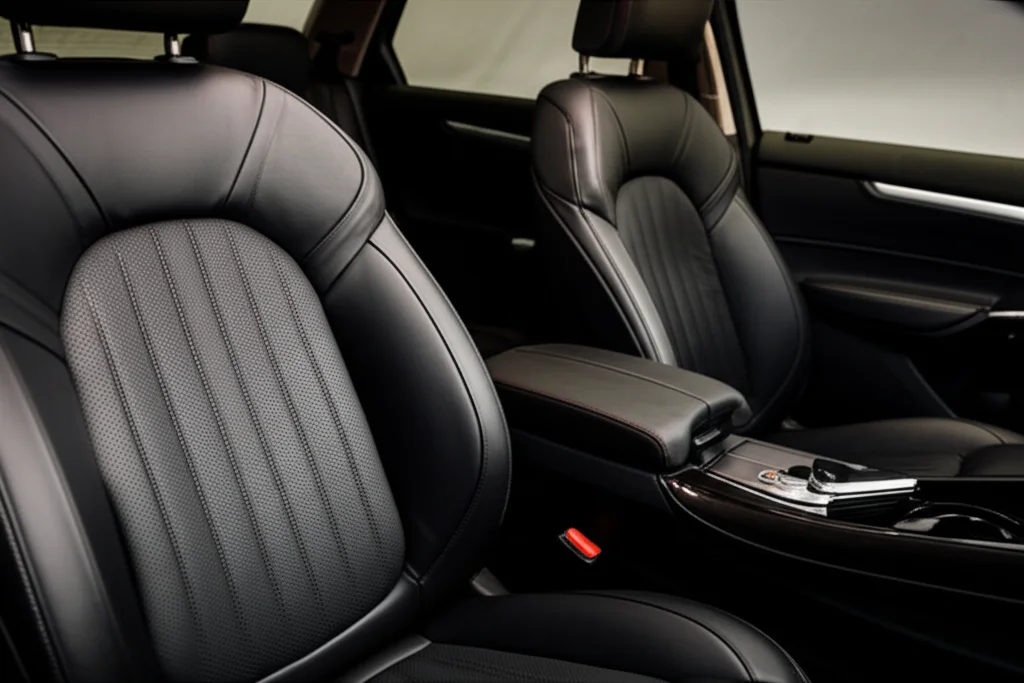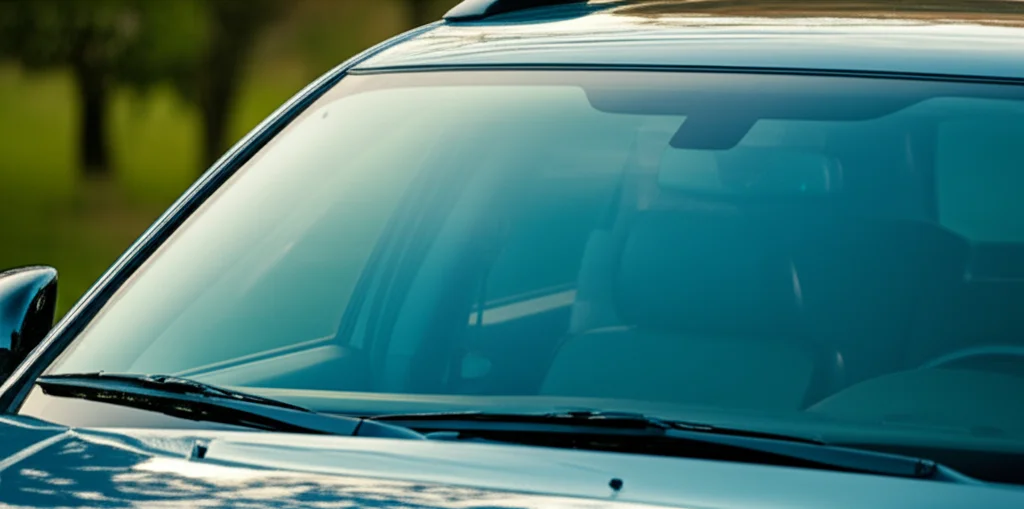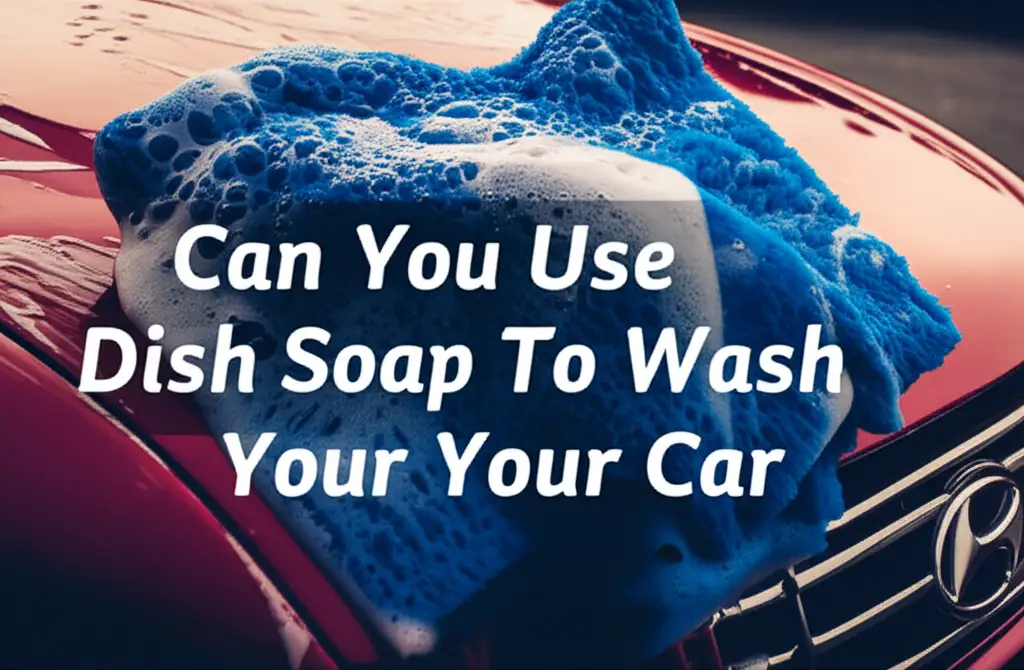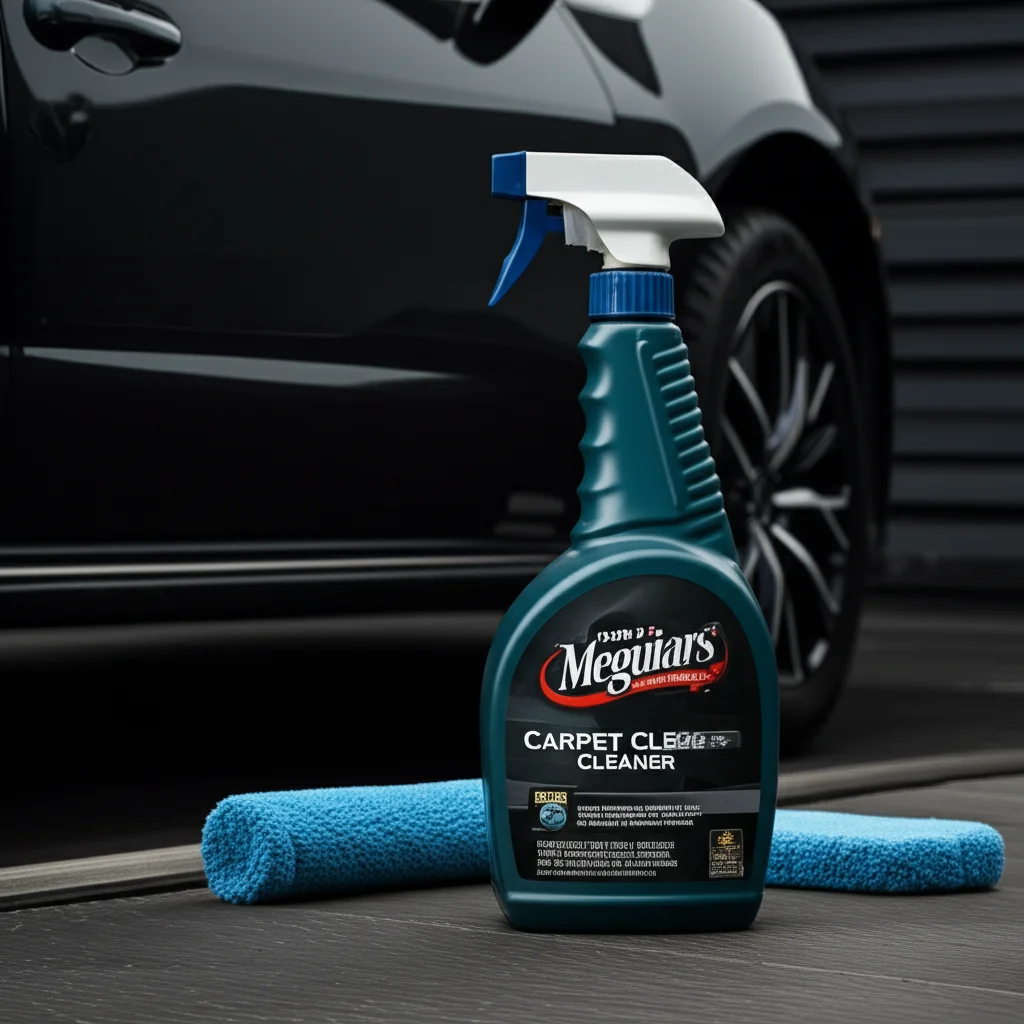· Davia Murnell · Car Care · 15 min read
How To Clean The Inside Of Your Car

Clean Your Car’s Interior: A Complete Guide
Think about the last time you stepped into your car. Did it feel like a fresh space or more like a forgotten storage unit? A clean car interior makes every drive better. I believe a tidy vehicle affects your mood and safety. It creates a calming atmosphere for your daily commute or road trips. This guide will show you exactly how to clean the inside of your car. We cover everything from floor to ceiling. You will learn simple steps to make your car shine. We will break down each task. You can achieve a professional-level clean right at home.
Takeaway
- Gather all necessary cleaning tools and supplies before starting.
- Always work from the top of your car’s interior down to the bottom.
- Use specific cleaning products suited for different interior surfaces.
- Address spills and stains immediately to prevent permanent damage.
- Establish a routine to maintain a consistently clean car environment.
To effectively clean the inside of your car, first declutter and vacuum thoroughly. Then, clean hard surfaces like the dashboard and door panels, followed by shampooing carpets and seats. Finish by cleaning windows and adding protective treatments. This step-by-step approach restores freshness and appearance.
Prepare Your Car for a Spotless Interior Clean
Before you begin any serious cleaning, proper preparation is key. I always start by removing everything from the car. This includes trash, personal items, and anything loose. This initial step makes the actual cleaning process much smoother. You will uncover hidden dirt and grime. It also helps you decide what belongs in the car and what needs to be taken out.
Gathering Your Cleaning Arsenal
Having the right tools makes a big difference. You do not need a lot of expensive items. Basic supplies work well for most cleaning tasks. I recommend a good vacuum cleaner with attachments, microfiber towels, and a few cleaning solutions. Make sure you have interior detailer, glass cleaner, and upholstery cleaner ready. A brush for scrubbing and a bucket of water are also useful.
The Initial Decluttering Phase
Start with the obvious trash. Look under seats, in cup holders, and in door pockets. Throw away wrappers, old receipts, and empty bottles. Remove all floor mats from the car. Shake them out to get rid of loose dirt. Take out child car seats or other large items too. This clears the deck for a deep vacuum. This stage is where you discover forgotten items. It also helps you decide what truly needs to be in your car. A clear space helps you focus on cleaning.
First Vacuum Pass for Loose Debris
Once everything is out, it is time for the first vacuum pass. Use your vacuum cleaner with the appropriate attachments. Start with the seats, getting into all the crevices. Then move to the floor and under the seats. Do not forget the trunk area. This initial vacuum removes larger pieces of dirt, crumbs, and pet hair. It prepares the surfaces for deeper cleaning. For a thorough deep clean of your vehicle, remember to handle large debris first. This makes subsequent steps more effective. A truly clean interior begins with this important foundation. You can learn more about how to deep clean your car by reading our guide. how to deep clean your car
Clean Car Dash, Console, and Door Panels
These surfaces are often the most touched parts of your car’s interior. They collect dust, fingerprints, and spills. Cleaning them regularly keeps your car looking fresh. I use a gentle approach for these areas. You want to remove dirt without causing damage. Always use products specifically for car interiors.
Cleaning Plastic and Vinyl Surfaces
Your dashboard, door panels, and center console are usually made of plastic or vinyl. For these areas, I use an interior detailer spray. Spray the detailer onto a microfiber towel, not directly onto the surface. This prevents overspray on sensitive electronics. Wipe the surfaces gently but firmly. Pay attention to vents and seams where dust collects. You can use a small brush or a cotton swab for tight spots. This method helps clean the interior of your car without leaving streaks.
Caring for Touchscreens and Displays
Modern cars have large touchscreens. These screens attract fingerprints and dust. Never use ammonia-based glass cleaners on them. These cleaners can damage anti-glare coatings. Instead, use a screen-specific cleaner or a slightly damp microfiber towel. Wipe gently in one direction. This removes smudges and keeps your display clear. A clean screen improves visibility and overall appearance.
Protecting Your Clean Surfaces
After cleaning, consider applying a UV protectant. Many interior detailers offer this benefit. This helps protect plastic and vinyl from sun damage. It prevents fading and cracking over time. Simply spray and wipe as directed. This simple step preserves your car’s appearance. It also keeps your interior looking new for longer. Keeping your car clean is easier with regular protection. For more car care tips, visit our comprehensive guide on how to keep your car clean. Another useful guide covers a related topic: how to clean your car interior.
Restore Your Car Seats and Upholstery
Your car seats endure a lot of wear and tear. Spills, dirt, and body oils can leave them looking dull. Cleaning your car seats effectively requires understanding their material. I always test cleaning products in a hidden spot first. This ensures the product will not discolor or damage the fabric. You want to lift dirt, not spread it around.
Deep Cleaning Fabric Car Seats
For fabric seats, start by vacuuming thoroughly again. Use a brush attachment to loosen embedded dirt. For general cleaning, I use a fabric upholstery cleaner. Spray the cleaner onto a microfiber towel or brush, not directly onto the seat. Gently agitate the fabric with the brush. This lifts the dirt to the surface. Then, wipe away the excess product and dirt with a clean, damp microfiber towel. You may need to repeat this process for stubborn stains. Let the seats air dry completely. For more detailed instructions on cleaning these areas, refer to our guide on how to clean fabric car seats.
Maintaining Leather Interiors
Leather seats require specific care. They can dry out and crack if not properly maintained. Use a dedicated leather cleaner and conditioner. Apply the cleaner to a soft cloth, then wipe the leather seats. Do not saturate the leather. Gently wipe in small sections. After cleaning, apply a leather conditioner. This moisturizes the leather and protects it. It helps prevent cracking and keeps the leather supple. Regular conditioning extends the life of your leather seats. Our detailed guide on how to clean car leather seats offers more advice.
Spot Treatment and Stain Removal
Accidents happen, and stains appear. For fresh spills, blot immediately with a clean cloth. Do not rub, as this can push the stain deeper. For older stains, identify the type of stain if possible. Use a specialized stain remover for that specific type. Always follow product instructions carefully. Work from the outside of the stain inward. This prevents the stain from spreading. Repeat until the stain lifts. You can get more information on cleaning your seats in general from our article on how to clean your car seats. Another helpful resource is our article how to clean seats in car.
Deep Clean Car Carpets and Floor Mats
Carpet and floor mats trap a lot of dirt, mud, and debris. They are magnets for everything dragged in on your shoes. Giving them a deep clean makes a huge difference in your car’s overall freshness. This step removes ground-in dirt and eliminates odors. I always give these areas extra attention.
Vacuuming Like a Pro
Start by removing all floor mats. Shake them vigorously outside the car to remove loose dirt. Use your most powerful vacuum setting inside the car. Use a crevice tool to reach under seats and into tight corners. A brush attachment helps agitate the carpet fibers, lifting stubborn dirt. Vacuum in multiple directions. This helps pull out deeply embedded particles. Do not rush this step. It builds the foundation for truly clean carpets.
Shampooing Carpets and Mats
For a deeper clean, shampooing is necessary. You can use a carpet shampoo made for cars. Some people use a carpet extractor for best results. If you do not have one, spray the carpet shampoo onto a section of the carpet. Work it into the fibers with a stiff brush. Let it sit for a few minutes as per the product instructions. Then, use a clean, damp cloth to blot and lift the dirt. Rinse the cloth often. Repeat until the area is clean. Ensure you do not over-saturate the carpet. Excessive moisture can lead to mold or mildew.
Drying Your Car Carpets
Proper drying is critical after shampooing. Open car doors and windows to allow for air circulation. You can use a wet/dry vacuum to extract as much moisture as possible. Fans or a car dryer can speed up the drying process. Do not put floor mats back in or close the car completely until everything is dry. This prevents unpleasant odors and mildew growth. A dry interior prevents problems. For more tips on this specific cleaning task, read our guide on how to clean car carpet.
Achieve Streak-Free Car Windows Inside
Clear windows are crucial for visibility and a polished look. Streaky windows can be annoying and reduce safety. Cleaning the inside of your car windows requires a specific technique. It is different from cleaning household windows. I aim for crystal-clear glass every time.
Best Practices for Crystal Clear Glass
Start by wiping down the windows with a dry microfiber cloth. This removes loose dust and dirt. For cleaning, use a dedicated automotive glass cleaner. Avoid ammonia-based cleaners, as they can harm tinted windows. Spray the cleaner onto a clean microfiber towel, not directly onto the glass. This prevents overspray on other interior surfaces. Wipe the glass in straight lines, either horizontally or vertically. Do not use circular motions, as this can cause streaks.
Two-Towel Method for Shine
I find the two-towel method very effective. Use one damp microfiber towel with the cleaner to clean the surface. Then, immediately follow with a second, dry, clean microfiber towel. Buff the glass with the dry towel until no streaks remain. For stubborn grime or film, you may need to repeat the process. This method ensures a spotless, streak-free finish. It also helps remove the greasy film that often builds up on the inside of car windows. You can also consult our article on how to clean car windows for more general advice. A specific guide on how to clean inside windshield is also available.
Cleaning Mirrors
Do not forget the rearview mirror and side mirrors. Use the same glass cleaner and two-towel method. Be careful with the rearview mirror, as it is often mounted on a swivel. Ensure all glass surfaces are clean. This improves your overall driving experience. Clear glass enhances visibility. It also adds to the satisfaction of having a clean car. Another helpful guide is how to clean car windshield.
Don’t Miss These Car Interior Details
While the major surfaces get most of the attention, small details matter. Overlooking these areas can leave your car feeling less than perfectly clean. Dust, grime, and crumbs hide in many unexpected places. I pay close attention to these hidden spots. They complete the interior cleaning process.
Cleaning Car Vents and Crevices
Air vents collect dust and can harbor odors. Use a soft brush or a detailing brush to dislodge dust from the vent slats. You can also use a compressed air can to blow out dust. For deep cleaning, a cotton swab moistened with interior cleaner works well for tight spots. The same approach applies to small crevices around buttons, seams, and console edges. These small details make a big impact on overall cleanliness. Removing this hidden dirt makes your car truly spotless.
Spot Cleaning the Headliner
The headliner, or the fabric on your car’s ceiling, can get dirty from touches, smoke, or spills. It is very delicate. Use extreme caution when cleaning it. I recommend using a dedicated fabric headliner cleaner. Spray it lightly onto a clean microfiber cloth, not directly onto the headliner. Gently blot the soiled area. Do not rub or scrub vigorously. This can damage the adhesive or fabric. If you see a large stain, blot it multiple times with fresh sections of your cloth. Allow it to air dry. For more specific advice, check out our guide on how to clean headliner in car.
Refreshing Seat Belts
Seat belts can get surprisingly dirty. They accumulate sweat, oils, and dirt from hands and clothing. Extend the seat belt fully. Use an all-purpose interior cleaner or a gentle fabric cleaner. Spray the cleaner onto a microfiber cloth. Wipe down the seat belt carefully. Pay extra attention to the areas you touch most often. Do not saturate the belt. Wipe with a clean, damp cloth to rinse. Let the seat belt air dry completely before retracting it. This prevents mildew. A clean seat belt is more pleasant to use. Read more on how to clean these safety features in our article about how to clean seat belts in car.
Keep Your Car Interior Clean for Miles
After all that hard work, you want your car to stay clean for as long as possible. Maintaining cleanliness is easier than doing a full deep clean every time. I have developed a few simple habits. These habits help keep the interior fresh between major cleaning sessions. Consistency is key here.
Quick Maintenance Habits
- Daily Declutter: Take out trash and personal items every time you leave the car. This prevents buildup.
- Weekly Vacuum: A quick vacuum of the floors and seats once a week helps. It picks up new dirt before it gets ground in.
- Wipe Down Surfaces: Use a quick detailer spray and a microfiber towel to wipe down the dash and console regularly. This removes dust and fingerprints.
- Floor Mat Shakes: Shake out your floor mats every few days. This prevents dirt from accumulating. These small steps make a big difference. They save you time in the long run. They keep your car consistently presentable.
Essential Car Cleaning Kit for Quick Cleans
Keep a small kit of essential items in your car. This allows you to handle small messes right away. My kit includes:
- Small trash bag: For daily waste.
- Microfiber towels: Always useful for wiping.
- Interior detailer spray: For quick wipe-downs.
- Glass cleaner wipes: For unexpected smudges on windows.
- Portable vacuum: A small handheld vacuum is great for quick crumb clean-ups. Having these items on hand makes it easy to address issues as they arise. It prevents small problems from becoming big ones. This proactive approach saves you from major cleaning tasks. It also keeps your car looking great.
Protecting Your Investment
Consider using protective products. Floor mats and seat covers can protect original upholstery. A dashboard protectant helps shield surfaces from UV rays. These items reduce wear and tear. They also make future cleaning easier. A well-maintained interior holds its value. It also offers a more pleasant experience for everyone. For tips on long-term car care, explore our article on how to keep car clean.
FAQ Section
How often should I clean the inside of my car?
The frequency depends on usage. I recommend a light clean weekly, including vacuuming and wiping surfaces. A more thorough deep clean should happen every 1-3 months. If you drive often, have kids, or transport pets, you may need to clean more often. Regular maintenance prevents heavy buildup of dirt and grime.
What is the best product for car interior plastic?
For car interior plastic, I find a good quality interior detailer or an all-purpose cleaner diluted works best. Look for products that offer UV protection to prevent fading. Spray the product onto a microfiber towel, then wipe the surface. Avoid harsh chemicals like bleach, which can damage surfaces.
Can I use household cleaners to clean my car’s interior?
I do not recommend using most household cleaners. Many are too harsh for car materials. For example, ammonia-based glass cleaners can harm tinted windows or dashboard plastics. Strong detergents can strip protective coatings or damage delicate fabrics. Stick to products specifically designed for automotive interiors.
How do I remove pet hair from car upholstery?
Pet hair can be tricky. Start with a thorough vacuuming using a brush attachment. For stubborn hair, try using a rubber glove. Rub the gloved hand over the upholstery; static electricity helps gather the hair. You can also use a pet hair removal tool or a stiff-bristled brush.
Is it okay to use water on car seats?
You can use water on car seats, but sparingly. Fabric seats often require a damp cloth with cleaner, but avoid saturating them. Leather seats need special leather cleaner applied with a damp cloth. Too much water can lead to mildew, stains, or damage to electronics underneath the seats. Always ensure proper drying.
Conclusion
A clean car interior does more than just look good; it improves your driving experience and preserves your vehicle’s value. We have explored every step needed to clean the inside of your car, from initial decluttering to detailed surface care. Remember to gather your tools, work from top to bottom, and use appropriate products for each material.
By following these simple yet effective steps, you can transform your car’s cabin into a fresh, inviting space. Regular maintenance, even quick wipe-downs and vacuuming, will keep your interior looking its best. I hope this guide helps you enjoy a spotless car every day. Start your cleaning journey today and feel the difference. A clean car is a happy car, and a happy driver.





